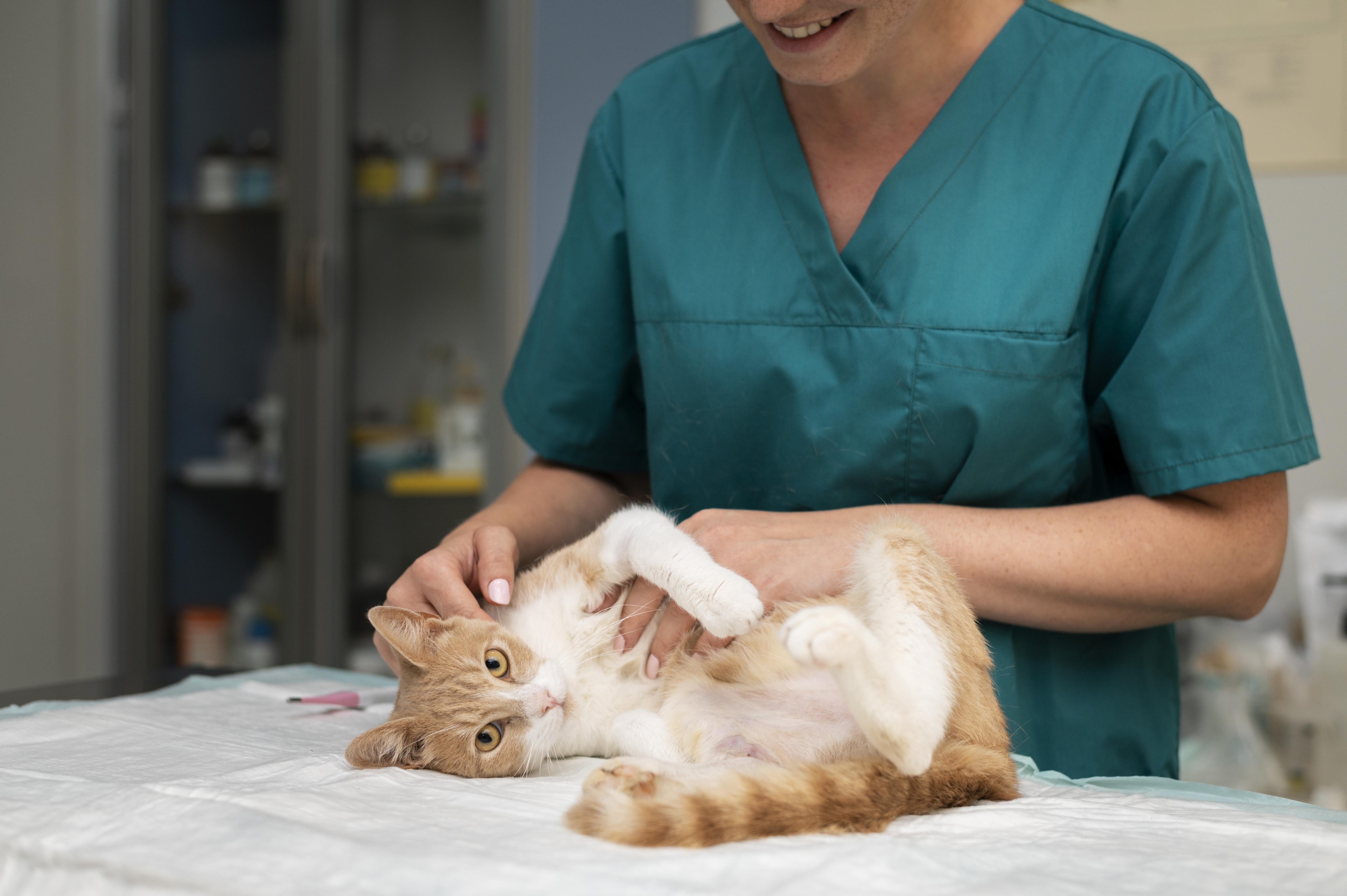Cats, with their subtle nature, often mask discomfort, making it challenging for owners to detect when something is amiss. Changes in behavior or daily routines can be subtle indicators that your feline companion is experiencing distress and may require veterinary attention. Gabapentin has emerged as a valuable medication in veterinary medicine to address various conditions in cats. Originally developed for humans as an anticonvulsant, gabapentin for cats is now widely used to manage anxiety, seizures, and pain.
This guide delves into the use of gabapentin in cats, focusing on potential Gabapentin Cats Side Effects and how to ensure its safe and effective administration. Understanding the correct gabapentin dosage for cats and being aware of possible adverse reactions are crucial for responsible pet ownership and ensuring your cat’s well-being.
What is Gabapentin and Why is it Used for Cats?
Gabapentin is a medication that was initially created for human use to control seizures. However, its applications have broadened significantly, and it is now a staple in veterinary medicine. Veterinarians frequently prescribe gabapentin for cats to manage chronic pain, particularly neuropathic pain arising from nerve damage or conditions like arthritis. It is also used as an adjunctive therapy for seizure control in cats with epilepsy. Interestingly, gabapentin also possesses anxiolytic properties, making it effective in calming anxious or stressed cats, especially in situations known to trigger anxiety, such as veterinary visits.
While gabapentin is not officially FDA-approved for use in pets, its effectiveness and rapid action have led to widespread off-label veterinary use. When considering gabapentin for your cat, it is paramount to consult with your veterinarian. They can determine if gabapentin is appropriate for your cat’s specific condition and determine the correct dosage based on individual needs and overall health status.
Potential Gabapentin Side Effects in Cats
Gabapentin for cats is generally considered safe when administered as prescribed by a veterinarian. However, like all medications, it can have potential gabapentin cats side effects. Being informed about these potential adverse reactions is crucial for cat owners to ensure their pet’s safety and well-being. It’s important to note that not all cats will experience side effects, and many tolerate the medication very well.
Here are some potential gabapentin side effects to be aware of:
Lethargy and Sedation
One of the most commonly observed gabapentin cats side effects is lethargy or sedation. Cats may become unusually tired, less active, and show reduced interest in their usual activities, such as playing or exploring. This is due to gabapentin’s mechanism of action, which affects nerve signals in the brain and can have a sedative effect. The degree of sedation can vary between individual cats and may be more pronounced at higher doses.
Incoordination and Wobbliness
Another potential gabapentin cats side effect is ataxia, or incoordination. You might notice your cat appearing wobbly, unsteady on their feet, or having difficulty with balance. This can manifest as a drunken-like gait or clumsiness. If your cat exhibits these signs, it’s essential to monitor them closely to prevent falls and injuries. This side effect is also related to gabapentin’s impact on the nervous system.
Gastrointestinal Issues (Vomiting and Decreased Appetite)
Gastrointestinal upset is another possible gabapentin cats side effect, although less common than lethargy or incoordination. Some cats may experience vomiting or a decrease in appetite after starting gabapentin. These symptoms are usually mild and temporary. However, persistent vomiting or a significant decrease in appetite should be reported to your veterinarian, as they could lead to dehydration or weight loss.
Behavioral Changes
In some cases, gabapentin can cause behavioral changes in cats. These gabapentin cats side effects can be varied and may include increased vocalization (excessive meowing), agitation, or, conversely, increased calmness beyond the desired sedative effect. Uncharacteristic behavioral changes should be discussed with your veterinarian to determine if they are related to the medication and if dosage adjustments are needed.
 Gabapentin Dosage for Cats
Gabapentin Dosage for Cats
Gabapentin Dosage for Cats: Finding the Right Balance
Determining the correct gabapentin dosage for cats is paramount to minimizing gabapentin cats side effects and maximizing its therapeutic benefits. Never administer gabapentin to your cat without explicit instructions from your veterinarian. Dosage is highly individualized and depends on several factors, including the condition being treated (pain, seizures, or anxiety), the cat’s weight, overall health, and individual response to the medication.
Here’s a general overview of typical gabapentin dosages for cats, but always follow your vet’s specific instructions:
-
Seizure Management: For controlling seizures, the gabapentin dose for cats typically ranges from 2.5 to 5 mg per pound of body weight, administered every 8 to 12 hours. In some cases, for more severe seizure activity, the dosage may be increased up to 10 mg per pound.
-
Pain Relief: When used for pain management, the starting gabapentin dosage for cats is usually between 1.5 to 5 mg per pound, given every 12 hours. For more intense pain, such as that associated with cancer or arthritis, higher doses, up to 50 mg per dose given up to three times daily, may be necessary to achieve adequate pain relief.
-
Anxiety Reduction: To alleviate anxiety, particularly in anticipation of stressful events like vet visits, a common gabapentin dosage for cats is 20 mg per kilogram of body weight, administered 1 to 2 hours before the anticipated stressful event. This helps to ease anxiety symptoms and facilitate a calmer experience.
Precautions and Important Considerations for Gabapentin Use in Cats
To ensure safe and effective use of gabapentin and minimize gabapentin cats side effects, several precautions and considerations are essential:
Monitoring Your Cat on Gabapentin
Regular monitoring of your cat while they are taking gabapentin is crucial. Observe for any signs of gabapentin cats side effects mentioned above, such as lethargy, incoordination, vomiting, decreased appetite, or behavioral changes. If you notice any concerning symptoms, contact your veterinarian promptly.
Dosage Adjustments and Individual Needs
Gabapentin dosage may need to be adjusted over time based on your cat’s response to the medication, the condition being treated, and the development of any gabapentin cats side effects. Regular communication with your veterinarian is vital to ensure the dosage remains appropriate and effective for your cat’s evolving needs. Never adjust the dosage yourself without veterinary guidance.
Gabapentin and Cats with Kidney Disease
Cats with chronic kidney disease (CKD) require special consideration when using gabapentin. Kidney disease can affect how the body processes and eliminates medications. Studies have shown that cats with CKD may exhibit higher serum concentrations of gabapentin, increasing the risk of gabapentin cats side effects. Therefore, veterinarians typically recommend lower doses of gabapentin for cats with kidney disease and close monitoring for any adverse reactions.
Stopping Gabapentin Safely: Tapering Off
Abruptly stopping gabapentin, especially after long-term use or in cats being treated for seizures, can be dangerous and may trigger withdrawal seizures or other adverse effects. If it becomes necessary to discontinue gabapentin, your veterinarian will provide a gradual tapering schedule. This involves slowly decreasing the dose over time to allow the cat’s body to adjust and minimize the risk of withdrawal symptoms.
Minimizing the Risk of Gabapentin Side Effects in Cats
While gabapentin cats side effects are possible, there are steps you can take to minimize the risk and ensure your cat’s safety:
- Always consult your veterinarian: Never administer gabapentin without a veterinarian’s prescription and guidance.
- Follow dosage instructions precisely: Administer gabapentin exactly as prescribed by your veterinarian. Do not adjust the dosage without their approval.
- Monitor for side effects: Be vigilant in observing your cat for any potential side effects, and report any concerns to your vet promptly.
- Communicate openly with your vet: Maintain open communication with your veterinarian regarding your cat’s response to gabapentin, any side effects you observe, and any changes in their condition.
Frequently Asked Questions about Gabapentin and Cats
Can you just stop gabapentin in cats?
No, abruptly stopping gabapentin in cats, particularly those being treated for epilepsy or after long-term use, can be dangerous and may lead to withdrawal seizures. Always consult with your veterinarian for guidance on how to safely discontinue gabapentin, which usually involves a gradual tapering process.
Is gabapentin bad for cats with kidney disease?
Gabapentin is not inherently “bad” for cats with kidney disease, but it requires careful dosage adjustments and monitoring. Cats with CKD may be more susceptible to gabapentin cats side effects due to altered drug metabolism. Veterinarians will typically prescribe lower doses and closely monitor cats with kidney disease on gabapentin.
How long can a cat stay on gabapentin?
Cats can remain on gabapentin for extended periods, even indefinitely, especially for managing chronic conditions like arthritis or chronic pain. Long-term use is common and often part of a comprehensive pain management plan. However, regular veterinary check-ups are essential to monitor for any potential long-term gabapentin cats side effects or the need for dosage adjustments.
Use Gabapentin Under Careful Guidance
Gabapentin for cats is a valuable medication offering relief from chronic pain, seizures, and anxiety, significantly improving the quality of life for many feline companions. Understanding potential gabapentin cats side effects and adhering to veterinary guidance are crucial for ensuring its safe and effective use. By being informed and working closely with your veterinarian, you can make responsible decisions about your cat’s health and well-being.
If you have any questions or concerns about using gabapentin for your cat, or if you suspect your cat is experiencing gabapentin cats side effects, do not hesitate to contact Paoli Vetcare for expert advice and support and to schedule an appointment.

